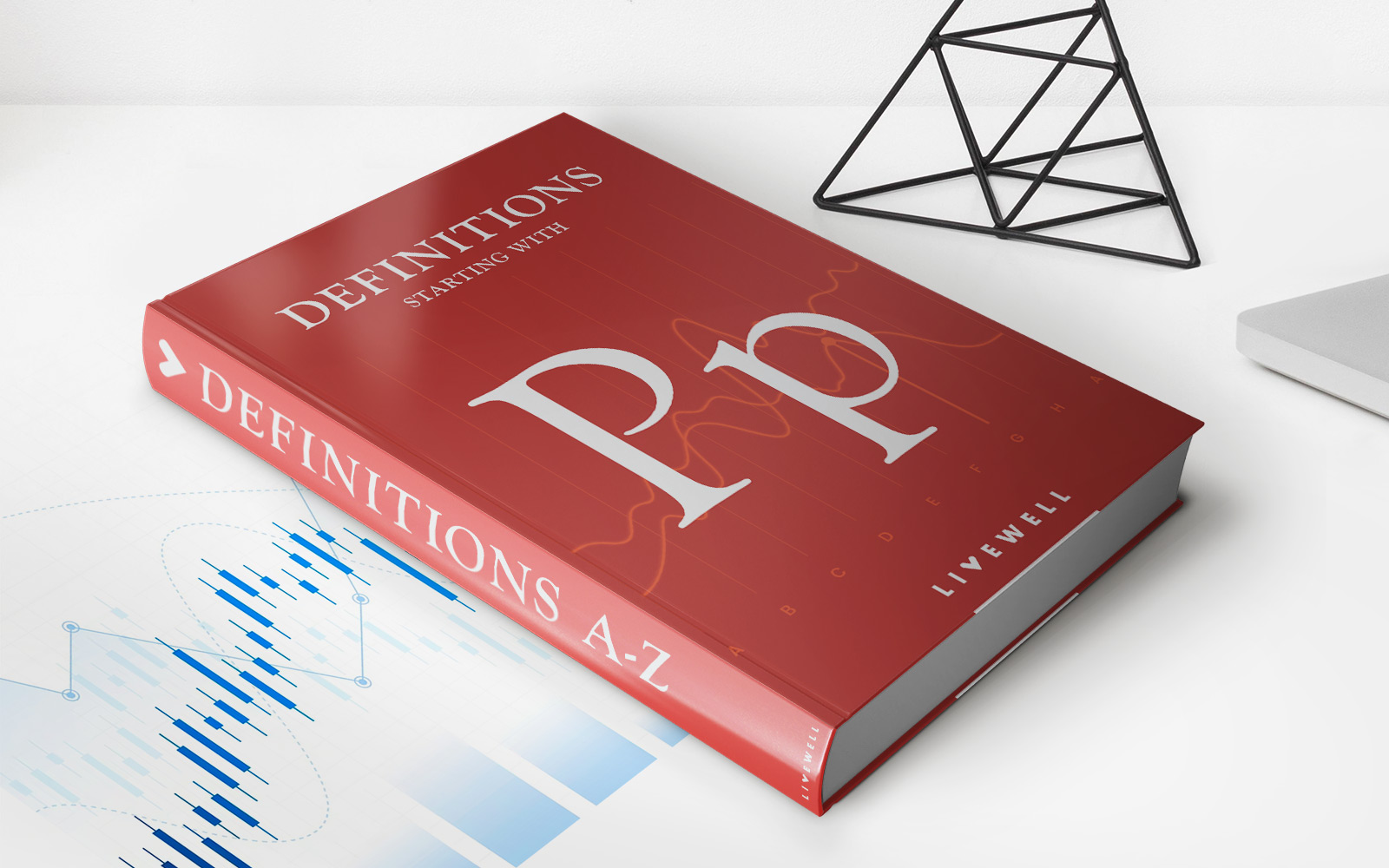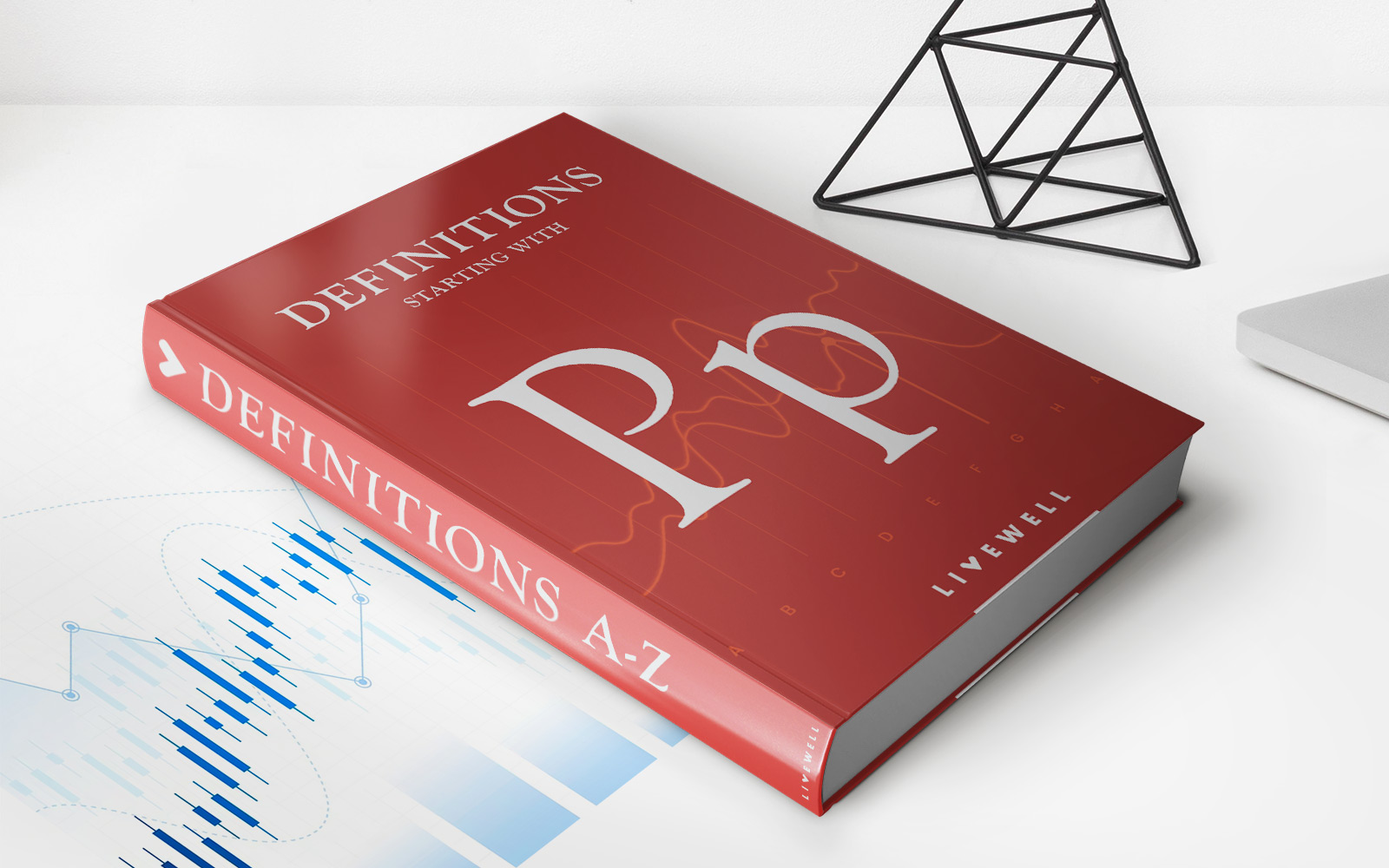Home>Finance>How Does The Taxation Of A Corporation Differ From That Of A Sole Proprietorship And Partnership?


Finance
How Does The Taxation Of A Corporation Differ From That Of A Sole Proprietorship And Partnership?
Published: November 2, 2023
Learn about the key differences in taxation between corporations, sole proprietorships, and partnerships in the field of finance. Explore the various implications and advantages.
(Many of the links in this article redirect to a specific reviewed product. Your purchase of these products through affiliate links helps to generate commission for LiveWell, at no extra cost. Learn more)
Table of Contents
Introduction
Choosing the right business structure is crucial for entrepreneurs and individuals looking to start their own businesses. The most common options are a corporation, sole proprietorship, and partnership. Each structure has its own advantages and disadvantages, including how they are taxed by the government.
In this article, we will explore how the taxation of a corporation differs from that of a sole proprietorship and partnership. Understanding these differences can help you make informed decisions about the best business structure for your financial goals and circumstances.
Before we delve into the tax implications, let’s briefly define each business structure:
- Corporation: A corporation is a legal entity that is separate from its owners. It is formed by filing the necessary documents with the state and has its own rights, privileges, and liabilities.
- Sole Proprietorship: A sole proprietorship is the simplest form of business structure. It is an unincorporated business owned and operated by a single individual.
- Partnership: A partnership is a business structure in which two or more individuals agree to share the profits, losses, and responsibilities of the business.
Definition of Corporation
A corporation is a legal entity that is formed and recognized by the state. It is owned by shareholders, who own shares of stock in the company. The shareholders elect a board of directors, who are responsible for managing the corporation’s affairs and making crucial decisions. The shareholders enjoy limited liability, meaning their personal assets are protected in case of corporate debts or legal issues.
Corporations enjoy perpetual existence, meaning their existence is not dependent on the individuals who founded the company. They can engage in various business activities, including buying or selling assets, entering into contracts, and suing or being sued in court. Corporations can also issue different classes of stock, such as common stock and preferred stock, which may carry different rights and privileges.
Corporations are subject to various regulations and legal requirements, such as filing annual reports, maintaining corporate minutes, and holding regular shareholder meetings. They are also subject to double taxation, where corporate profits are taxed at the corporate level and then again when distributed to shareholders as dividends.
Overall, corporations offer a higher level of credibility and prestige compared to other business structures. They are often chosen by entrepreneurs seeking to raise capital through the sale of stock and attract investors. Additionally, corporations can offer employee benefits, such as stock options and retirement plans, which can be advantageous in attracting and retaining talented individuals.
Definition of Sole Proprietorship
A sole proprietorship is the simplest and most common form of business structure. In a sole proprietorship, an individual operates their business as an extension of themselves. There is no legal distinction between the business and the owner, meaning the owner is personally liable for all debts and liabilities of the business.
One of the key advantages of a sole proprietorship is the ease of formation. There are no formal legal procedures or requirements to create a sole proprietorship. As long as the individual is conducting business for profit under their own name, they are considered a sole proprietor.
Sole proprietors have complete control over their business and make all decisions independently. They are not required to share profits or consult with partners or shareholders. This flexibility also allows for quicker decision-making and greater autonomy.
In terms of taxation, the income of a sole proprietorship is considered personal income and is reported on the owner’s individual tax return. This means that the business itself is not subject to separate taxation. Additionally, the owner may be eligible for certain tax deductions and credits related to their business expenses.
However, one of the main disadvantages of a sole proprietorship is unlimited personal liability. The owner’s personal assets, such as their home or savings, can be at risk in the event of business debts or legal claims. This lack of liability protection can be a significant concern for some individuals.
While a sole proprietorship may be suitable for small businesses or self-employed individuals, it may not be ideal for businesses with substantial risks or those seeking to attract investors or partners. Nonetheless, many entrepreneurs opt for a sole proprietorship due to its simplicity and minimal regulatory requirements.
Definition of Partnership
A partnership is a business structure in which two or more individuals join forces to carry on a business with the goal of making a profit. Partnerships can take different forms, such as general partnerships, limited partnerships, and limited liability partnerships (LLPs), each with its own set of rules and regulations.
In a general partnership, all partners share the same rights and responsibilities in managing the business and are jointly liable for the debts and obligations of the partnership. This means that each partner is personally responsible for the actions of the other partners and the debts incurred by the partnership.
In a limited partnership, there are two types of partners: general partners and limited partners. General partners have unlimited liability and actively participate in managing the business, while limited partners have limited liability and are typically passive investors who contribute capital but do not have a say in the day-to-day operations.
An LLP, on the other hand, provides partners with limited liability. In an LLP, each partner is protected from personal liability for the negligence, misconduct, or debts of the other partners. This structure is often common among professionals, such as lawyers, accountants, and doctors.
Partnerships are formed through a partnership agreement, which outlines the rights, responsibilities, and distribution of profits and losses among the partners. This agreement is essential to ensure clarity and prevent disputes among the partners.
From a taxation perspective, partnerships are not subject to separate taxation. Instead, the profits and losses of the partnership flow through to the individual partners, who report their share of the partnership income on their personal tax returns. This is known as pass-through taxation, which means the partnership itself does not pay income taxes.
Partnerships offer a combination of shared management, shared liability, and shared profits, making them an attractive option for businesses with multiple owners who want to pool resources, skills, and expertise. However, it is important to have a clear partnership agreement and consider the potential risks and benefits before entering into a partnership.
Taxation of a Corporation
One of the key differences between a corporation and other business structures is how they are taxed. Corporations are subject to double taxation, which means that they are taxed at both the corporate level and the individual level.
At the corporate level, a corporation is required to file a separate tax return with the government, reporting its income, deductions, and expenses. The corporate tax rate varies depending on the country and jurisdiction, but it is typically higher than the individual tax rate.
After paying taxes at the corporate level, the remaining profits can be distributed to the shareholders in the form of dividends. However, these dividends are subject to individual income tax for the shareholders, resulting in double taxation. This means that the same profits are taxed once at the corporate level and again at the individual level.
To mitigate the effect of double taxation, some corporations may choose to retain earnings and reinvest them back into the business. By doing so, the taxes on these retained earnings are deferred until they are distributed to shareholders.
It’s important to note that certain types of corporations, such as S corporations in the United States, are pass-through entities. This means that the corporation itself does not pay income taxes. Instead, the profits and losses of the corporation flow through to the shareholders, who report them on their individual tax returns. Pass-through entities offer a tax advantage by avoiding double taxation.
Corporations also have the ability to deduct certain expenses, such as employee wages, benefits, and business-related expenses, from their taxable income. These deductions can help reduce the overall tax liability of the corporation.
Furthermore, corporations may be eligible for specific tax incentives or credits based on their industry, location, or business activities. These incentives can include research and development credits, investment tax credits, or credits for energy-efficient practices.
Overall, while the double taxation of corporations can be a disadvantage, corporations also have access to certain tax advantages and incentives that can help offset the tax burden. It is important for corporations to work closely with tax professionals to ensure compliance with tax regulations and to make informed decisions to minimize their tax liability.
Taxation of a Sole Proprietorship
The taxation of a sole proprietorship differs from that of a corporation. Unlike corporations, sole proprietorships are not considered separate legal entities. Instead, the business income and expenses of a sole proprietorship are reported on the owner’s individual tax return.
As a sole proprietor, you are required to report your business income and expenses on Schedule C of your personal tax return. This allows you to combine your personal income and your business income for tax purposes.
The business income is subject to self-employment taxes, which include Social Security and Medicare taxes. These taxes are calculated based on a percentage of your net income from the business.
In addition to self-employment taxes, sole proprietors are also responsible for paying income taxes on their business profits. The income tax rate will depend on the individual’s tax bracket and other personal factors.
One advantage of a sole proprietorship is the ability to deduct business expenses. Sole proprietors can deduct various business-related expenses, such as office rent, utilities, supplies, and marketing expenses, from their taxable income. This can reduce the overall tax liability for the business owner.
It’s important for sole proprietors to maintain accurate records of their business income and expenses to ensure proper reporting and to support any deductions claimed on their tax returns. Keeping detailed records can also simplify the tax filing process and help in the event of an audit.
Unlike corporations, sole proprietorships do not have the option to retain earnings or distribute dividends. The business profits are considered personal income for the owner and are subject to individual income tax.
Since sole proprietorships do not have the same level of complexity as corporations, their tax obligations are more straightforward. However, it is still important to consult with a tax professional or accountant to ensure compliance with tax regulations and to take advantage of all available deductions and tax-saving strategies.
Taxation of a Partnership
When it comes to the taxation of a partnership, it differs from that of both corporations and sole proprietorships. Unlike corporations, partnerships are not subject to double taxation. Instead, partnerships are pass-through entities, which means that the partnership itself does not pay income taxes.
Instead, the profits and losses of the partnership are distributed among the partners and reported on their individual tax returns. Each partner includes their share of the partnership’s income or loss on their personal tax return, regardless of whether the profits were distributed to them or reinvested in the business.
It is essential for partnerships to file an annual information return, known as Form 1065, to report the partnership’s income, deductions, and other financial information. This return helps the IRS (or other relevant tax authorities) ensure that each partner is reporting the correct amount of income on their individual tax returns.
In addition to reporting their share of the partnership’s income, partners will also pay self-employment taxes on their distributive share of the partnership’s net earnings. This includes Social Security and Medicare taxes, similar to sole proprietors.
Partnerships have some flexibility when it comes to allocating profits and losses among partners. The partnership agreement outlines the distribution of profits and losses, although these allocations must have a “substantial economic effect” to be recognized for tax purposes.
Partnerships may also be eligible for certain deductions, such as business expenses and depreciation, which can help reduce the taxable income of the partnership and, ultimately, the tax liability of the partners.
It’s worth noting that partners in a partnership are responsible for their own individual tax obligations and should receive a Schedule K-1 form from the partnership. This form outlines their share of the partnership’s income, deductions, and credits, which they will use to complete their personal tax return.
It is important for partners in a partnership to work closely with a tax professional or accountant to ensure compliance with tax regulations and to make informed decisions regarding the distribution of partnership profits and allocation of business expenses.
Comparison of Taxation Methods
Now that we have explored the taxation of corporations, sole proprietorships, and partnerships, let’s compare the tax implications of each business structure.
Double Taxation vs. Pass-Through Taxation: The key distinction between corporations and sole proprietorships/partnerships is in the treatment of taxes. Corporations are subject to double taxation, where the corporation itself pays taxes on its profits, and then shareholders pay taxes on the dividends received. In contrast, sole proprietorships and partnerships are pass-through entities, where the business income is reported on the owner’s individual tax return and taxed only once.
Tax Rates: The tax rates for corporations, individuals, and partnerships can differ. Corporate tax rates may vary based on the country and jurisdiction, whereas individual tax rates depend on the individual’s income bracket. Partnerships do not pay income taxes at the entity level, as the taxes are levied at the individual partner level.
Flexibility of Income Distribution: Partnerships offer more flexibility in allocating profits and losses among partners. The partnership agreement determines the distribution, allowing for different shares based on the partners’ contributions or agreements. In contrast, corporations and sole proprietorships follow a more structured approach, with corporations requiring dividends for profit distribution.
Liability Protection: Corporations provide limited liability protection for shareholders, meaning their personal assets are not typically at risk for business debts. Sole proprietorships and partnerships, on the other hand, do not offer this protection. The owners of sole proprietorships and general partners in partnerships are personally liable for business obligations.
Retained Earnings: Corporations have the ability to retain earnings within the business, allowing for potential growth and reinvestment. These retained earnings are taxed at the corporate level but can be deferred until dividends are distributed to shareholders. Sole proprietorships and partnerships do not have a separate concept of retained earnings since the business income flows directly to the individual owners.
Tax Deductions: All business structures have the opportunity to deduct certain business expenses, but the specific deductions available may vary. Corporations, sole proprietorships, and partnerships can deduct eligible business expenses such as rent, supplies, and employee wages. It is important to consult with a tax professional to ensure compliance and take full advantage of available deductions.
Tax Incentives: Governments may offer specific tax incentives or credits targeting certain industries or activities. It is beneficial for businesses to explore potential tax incentives that may apply to their respective structures.
Ultimately, the choice of business structure should consider not only tax implications but also factors such as legal liability, management structure, and long-term business goals. Consulting with a tax or legal professional can help in making an informed decision based on the specific needs and circumstances of the business.
Factors to Consider when Choosing a Business Structure
When deciding on a business structure, it is important to carefully consider various factors that can impact your business’s operations, taxes, and legal obligations. Here are some key factors to keep in mind:
Liability Protection: Consider the level of personal liability you are comfortable with. If you want to protect your personal assets from business debts or legal claims, a corporation or limited liability company (LLC) may be suitable. Sole proprietorships and general partnerships offer no liability protection, exposing personal assets to business risks.
Tax Implications: Analyze the tax implications of each structure and determine which aligns best with your financial goals. Consider how the business profits will be taxed and whether the structure offers any tax advantages or incentives.
Management Structure: Evaluate how you want your business to be managed. Corporations have a board of directors and officers responsible for decision-making, while sole proprietorships and partnerships allow for more autonomy. LLCs provide flexibility in management structure, allowing owners to choose between member-managed or manager-managed setups.
Administration and Compliance: Consider the administrative requirements and regulatory compliance associated with each structure. Corporations have more formalities, including filing annual reports, holding shareholder meetings, and maintaining corporate records. Sole proprietorships and partnerships have fewer formalities but may still have obligations like obtaining necessary licenses or permits.
Scalability and Growth: Determine your growth plans for the business. If you envision significant expansion or seeking external funding, a corporation or LLC may be more suitable due to their ability to issue stocks or attract investors. Sole proprietorships and partnerships may be more appropriate for small-scale or lifestyle businesses.
Transfer of Ownership: Consider the ease of transferring ownership or selling the business. Corporations and LLCs typically have more straightforward processes for transferring ownership interests, while sole proprietorships and partnerships may face more challenges due to their structure.
Costs and Complexity: Evaluate the financial costs and administrative complexities associated with each structure. Corporations and LLCs often have higher startup and maintenance costs due to filing fees, legal documentation, and professional services. Sole proprietorships and partnerships generally have lower setup costs and fewer ongoing obligations.
Personal Goals and Risk Tolerance: Assess your personal goals, risk tolerance, and long-term objectives for the business. Consider your comfort with sharing decision-making and finances with partners, the desire for personal liability protection, and the level of involvement you want in the day-to-day operations.
It is recommended to consult with legal and tax professionals to assess your specific circumstances and receive tailored advice for selecting the most appropriate business structure. They can help you navigate the legal and tax implications, ensuring compliance and minimizing risks.
Conclusion
Choosing the right business structure is a crucial decision that can have significant implications for your business’s taxation, legal liability, and overall success. By understanding the differences in taxation between corporations, sole proprietorships, and partnerships, you can make an informed decision that aligns with your goals and circumstances.
Corporations offer limited liability protection but are subject to double taxation, which may affect the overall tax burden. However, they provide credibility, the ability to raise capital, and certain tax advantages. Sole proprietorships provide simplicity and pass-through taxation, but come with personal liability for business debts. Partnerships offer flexibility in profit distribution, shared management, and pass-through taxation, but also involve shared liability among partners.
When comparing the tax implications, it is important to consider other factors as well, such as the management structure, scalability, administrative requirements, costs, transferability, and personal goals. Each business structure comes with its own set of advantages and disadvantages that might influence your decision.
To make an informed choice, it is advisable to seek guidance from legal and tax professionals who can provide personalized advice based on your specific situation. They can help you navigate the complexities of the tax code, ensure compliance with regulations, and choose the structure that best aligns with your business goals.
Remember that the choice of business structure is not set in stone and can be changed as your business evolves. Regularly reassessing your business structure and consulting with professionals will ensure that you remain optimized for tax purposes, legal protection, and future growth.
Ultimately, by carefully considering the tax implications and other relevant factors, you can select the most suitable business structure that sets you up for success in the long run.














